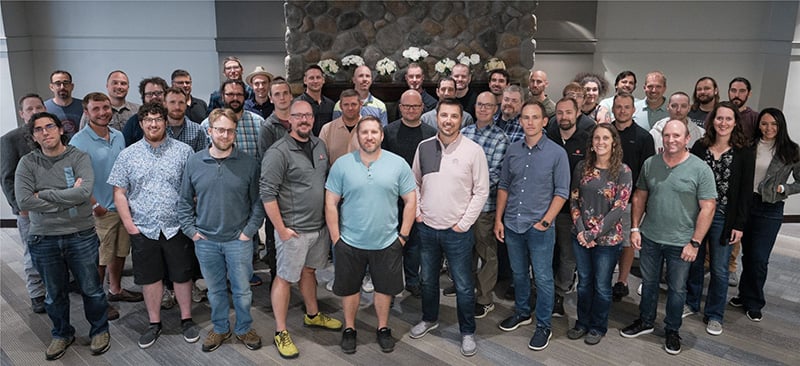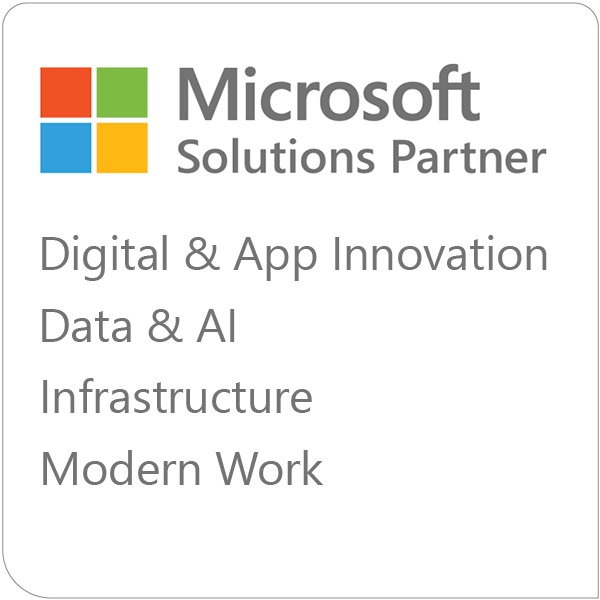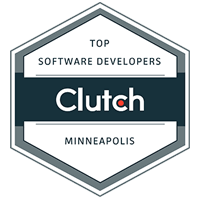In This Blog
- Perfection is the Enemy of Progress in AI
- Start Small: Task-Level AI, Not Role-Level Replacement
- A Real-World Example: Accelerating Proposal Writing with AI
- Prompt Engineering is the New Employee Onboarding
- Choosing the Right Tool for the Job
- Data Quality Matters (More Than You Think)
- Don’t Skip Change Management: Building an AI Center of Excellence
- Final Thoughts: AI is a Journey, Not a One-Off Project
- Frequently Asked Questions About Enterprise AI Adoption
Artificial intelligence is moving fast, but most enterprises still feel stuck. A recent McKinsey study found that 70% of AI proof-of-concepts never make it past the pilot phase. From my perspective working with clients across industries, I’d argue that number is actually even higher.
At Emergent Software, we’ve spent the last few years deep in the AI trenches, helping organizations move from experimentation to tangible outcomes. Alongside my colleague Brian Anderson, we’ve gathered a number of lessons from the field that can help enterprises break through the common barriers and finally get AI into production.
Perfection is the Enemy of Progress in AI
One of the first things we advise our clients is to let go of perfection. Too often, companies expect their first AI implementation to be flawless, and when it isn’t, they shelve the initiative.
But here’s the reality: the AI we experience today is the worst AI we’ll ever use in our lifetime. It’s only going to get better. Instead of chasing 100% accuracy, businesses should target 70-80% efficacy. If an AI agent can reduce customer service escalations by 30%, or save an hour on a task that normally takes three, that’s a meaningful win.
Start Small: Task-Level AI, Not Role-Level Replacement
We also see many companies attempt to build a “super agent” that can handle everything across the organization. It’s an exciting idea, but today’s AI simply isn’t built for that.
We’ve learned that narrowly scoped, task-specific agents are far more effective. Take accounts payable, for example. Instead of trying to replace the entire role with AI, you’re better off building a light agent that handles a single step, like matching invoices to purchase orders, freeing up staff to focus on more strategic tasks.
As Brian often says, we should structure AI agents the same way we structure teams: with focused roles and responsibilities.
A Real-World Example: Accelerating Proposal Writing with AI
One client we worked with in professional services had a common pain point: assembling employee resumes into client proposals. This was a manual, tedious task that involved reformatting and rewriting content to meet brand standards.
We built an AI workflow that could:
-
Ingest resumes in all their unique formats
-
Extract relevant experience based on project needs
-
Rewrite the content using the company’s tone, formatting, and pronoun preferences
This significantly reduced proposal turnaround time and improved consistency, while allowing the proposal team to focus on higher-value work.
Prompt Engineering is the New Employee Onboarding
When I help clients build AI solutions using platforms like Microsoft Copilot Studio, one critical step is crafting the right prompt, or set of instructions.
I often compare it to onboarding a new employee. AI doesn’t inherently understand your business or your standards, it needs clear, detailed guidance, often in bullet-point format, on how to behave, respond, and format outputs. The more context you provide upfront, the better the results.
Choosing the Right Tool for the Job
At Emergent Software, we typically help clients navigate their AI strategy using a tiered approach:
-
Leverage Existing Tools: Microsoft 365 Copilot and Copilot Studio are great starting points for many organizations, especially for task automation.
-
Low-Code Solutions: When you need to automate across systems, low-code tools like Copilot Studio can bridge the gap.
-
Custom AI Development: For highly specialized needs, Azure AI Foundry allows us to build tailored models embedded directly into client software.
We also advise clients to explore third-party solutions where it makes sense, especially in fields like legal and HR, where robust tools already exist.
Data Quality Matters (More Than You Think)
AI is only as good as the data it’s trained on. In a recent engagement with a large manufacturer, we saw firsthand how messy data, like inconsistently formatted PDFs, confused the AI and degraded results.
Improving data structure by using consistent file naming and applying governance tools like Microsoft Purview can make a huge difference. Your AI tool doesn’t just need access to information; it needs the right data, in the right format.
Don’t Skip Change Management: Building an AI Center of Excellence
The technology is just one piece of the puzzle, Successful AI adoption depends on ensuring that everyone across the organization is informed, aligned, and operating from the same understanding. Without this shared foundation, AI efforts often become fragmented, leading to confusion, inconsistent practices, or stalled progress.
Establishing an AI Center of Excellence (COE) is one of the most effective ways to keep teams connected. A COE brings together IT, business leaders, and power users to define clear priorities, set standards, and establish governance around AI initiatives. It ensures that AI is not just an isolated IT effort, but a coordinated, organization-wide strategy with the right guardrails, education, and collaboration in place.
Final Thoughts: AI is a Journey, Not a One-Off Project
AI is evolving rapidly. What worked six months ago might have a better, faster solution today. Enterprises that succeed with AI will approach it as an ongoing journey, constantly iterating, learning, and improving.
At Emergent Software, we help organizations define and execute their AI strategy through workshops, consulting, and solution development. If you’re looking to move your AI initiatives beyond proof of concept, let’s talk.
Connect with us at emergentsoftware.net or find me, Marc Kermisch, and Brian Anderson on LinkedIn.
Clips were taken from an Emergent Software webinar on AI. To watch the full recording of this webinar, please visit link.
Frequently Asked Questions About Enterprise AI Adoption
1. Why do so many AI initiatives get stuck in the pilot phase?
In my experience, it’s often because organizations are chasing perfection. They expect AI to deliver flawless, fully-polished results before moving forward, which simply isn’t realistic with today’s technology. The key is to focus on incremental gains, whether that’s time savings, cost reduction, or improved accuracy. Progress beats perfection every time.
2. What’s the difference between a task-level AI agent and a role-level AI agent?
Task-level agents are designed to handle very specific, repeatable tasks, like extracting data from invoices or generating a summary from a resume. Role-level agents attempt to replicate everything a human in a particular role does, which is far too broad for today’s AI to handle effectively. We recommend starting small and building specialized agents that can scale over time.
3. How important is data quality when implementing AI?
Data quality is critical. If your data is disorganized, incomplete, or inconsistently formatted, AI models will struggle to deliver useful results. A big part of any AI project should be assessing the state of your data, improving structure, and applying governance frameworks like Microsoft Purview to ensure the AI is accessing accurate, reliable information.
4. How can enterprises ensure secure and compliant AI implementations?
We always emphasize good security hygiene. This means enforcing proper identity and access management, using data loss prevention policies, and making sure the AI only accesses data it’s authorized to use. Microsoft’s security and compliance tools integrate well with AI solutions, which is why we often recommend their ecosystem for enterprise use.
5. What’s an AI Center of Excellence (COE), and do we need one?
An AI COE is a cross-functional team dedicated to guiding the organization’s AI strategy, governance, and adoption. It includes members from IT, the business, and often compliance or risk management. Having a COE helps ensure that AI initiatives align with business objectives, scale responsibly, and are governed effectively. If you’re serious about AI, forming a COE is a smart move.
6. What’s the best place for our organization to start with AI?
Start by leveraging the AI tools already embedded in your existing software, like Microsoft 365 Copilot. From there, identify repetitive, time-consuming tasks that could benefit from automation or AI assistance. Running an AI strategy workshop (like the ones we do at Emergent Software) is also a great way to surface use cases, prioritize opportunities, and build a roadmap.






